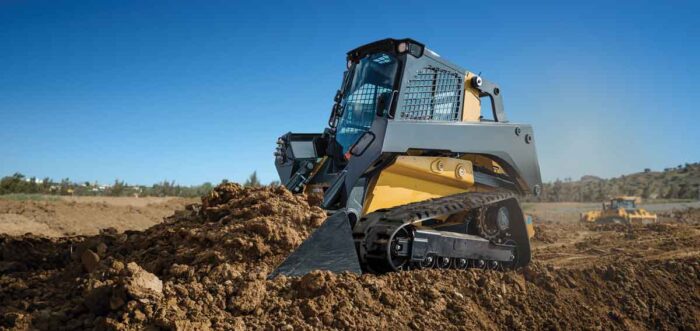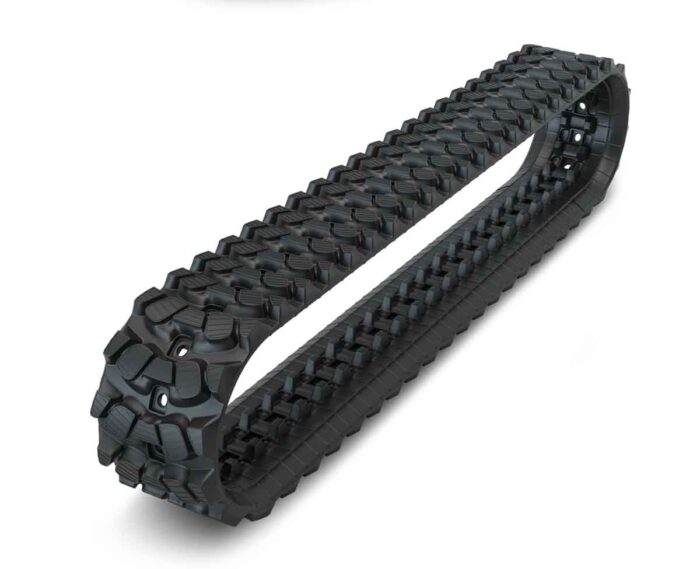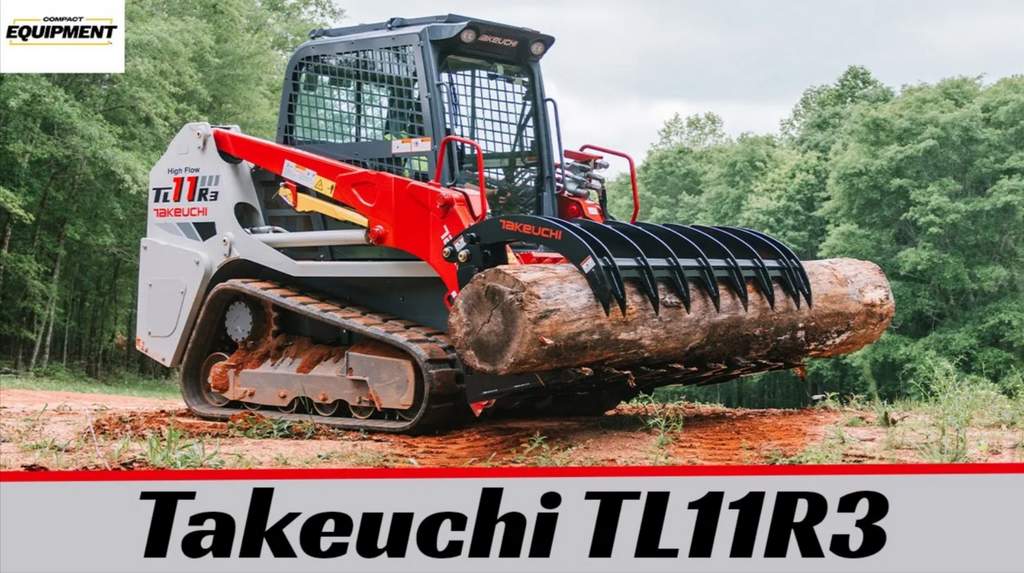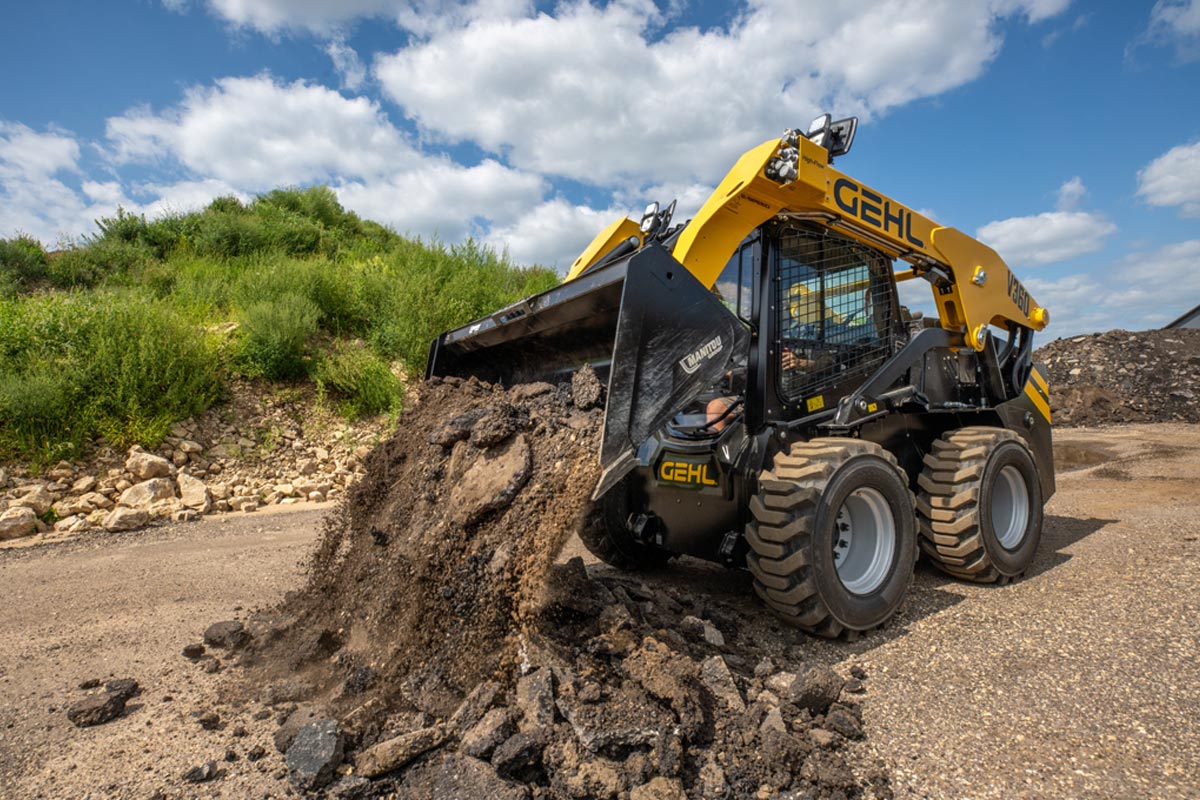Explore Track Options for Compact Track Loaders

Rubber tracks are critical when it comes to the performance of a modern compact track loader. Tracks determine the safety of starting, stopping and turning. They are also crucial in keeping the ground pressure as low as possible, which protects the surface that the machine is running on, as well as gives the machine the maximum amount of stability and traction. By using the proper track option, you will get the best life out of your rubber tracks, the least damage to your machine and the most comfortable ride for your operator. Additionally, productivity is increased by using the proper track and tread design, by ensuring that there are no traction issues that will slow down the machine causing it to take longer to complete the job. There is also less chance of downtime by using the proper track for a given application.
Proper Guide Style
The guide configurations of CTL tracks are also mandatory to get the best performance from your rubber tracks. This ensures that the track will fit the undercarriage correctly and minimize the chances of de-tracking. Whether it is a “T” style guide configuration or a “B” style guide configuration, by using the proper track for that style, one guarantees the longest life and greatest performance possible. This will also ensure that there will be a minimum amount of machine vibration, which is physically easier on the operator and will add to the life of the machine parts.
Internal Parts and Materials of Rubber Tracks
Different tracks offer different internal components, which can affect the life and performance of the tracks. Continuous wound cables will prolong the life of tracks greatly. Rubber compounding and forged metal pieces are also internal components, which will improve the quality and life of a rubber track. So, while tracks may be the same size, different manufacturers offer different internal components, which will dictate the quality and life of their tracks. These components can increase or decrease the life of the track by as much as 40 percent. This leads to downtime for changing the tracks, which will affect both the life and performance of the machine.
Different Tread Styles

There is also a bit of preference involved with the choice the operator makes when it comes to choosing a tread design. Some like the look of an aggressive multi-lug style while some prefer the beefier look of the C-lug or Staggered block design. What is most important to remember is that the tread design of a track will heavily influence its performance in different applications. What is good on a heavy construction work site will not perform as well in muddy or loose dirt applications. It is important to analyze your most frequent applications and choose the tread design that will work the best for you. Below are listed some of the most popular CTL tread patterns, along with their attributes.
Multi-Lug
There are several different designs and names for multi-lug style tread patterns such as all-season, Z-lug and multi-lug. These are the most modern tread designs, and perfect for use in a multitude of applications. These tread designs also tend to have a nice visual appeal and are becoming the choice of many original equipment offerings. This design will work better than others in wet, muddy and snow-covered applications while also performing well at everyday jobsites due to the increased traction. The trade-off is that it will not have the cut and debris resistance that the large lug/C-lug tread will have, so it can be more susceptible to deep cuts, which will eventually result in lower life.
C-Lug
The C-lug is one of the oldest and most popular designs for CTLs and is frequently seen on new machines as the original equipment fitment. The C-lug is good for heavy construction applications as it has bigger, deeper tread lugs. These will be more resistant to cuts and imbedded debris, thus making the track last longer. With that being said, when compared to an all-season tread style, a C-lug will lose traction, which can cause slipping, site destruction and, in some cases, not allow the operator to work in very muddy or snowy conditions.
Staggered Block
The staggered block pattern is an older design that is not as popular as it once was. This is primarily because the C-lug offers all the same benefits as the staggered block, such as a thick tread block which is resistant to deep cuts, while it offers better traction due to the “cutout” which gives it the C-lug appearance.
Multi-Bar
The multi-bar is arguably the least popular CTL tread design and is rapidly being replaced with multi-lug designs. In the early days of CTLs, this was a popular design as an alternative to the block lug, but that has now been replaced with the multi-lug which has better traction and tread life. The newer designs not only offer better forward and backwards traction but also have much better lateral stability. The multi-bar is now considered obsolete by many operators due to its short lifespan.
The bottom line is that there are many different styles of rubber tracks for compact track loaders, and some offer better performance characteristics in certain applications, while others will always perform well in all applications. You should always speak to your local track salesperson and explain the normal use for your CTL and get advice on the best rubber track for your unique situation.
Mike Giordano is the segment manager for rubber tracks in North America at Yokohama TWS North America Inc.
Compact track loaders are the most popular category of compact equipment in America. Learn why with loads of track loader features right here.




